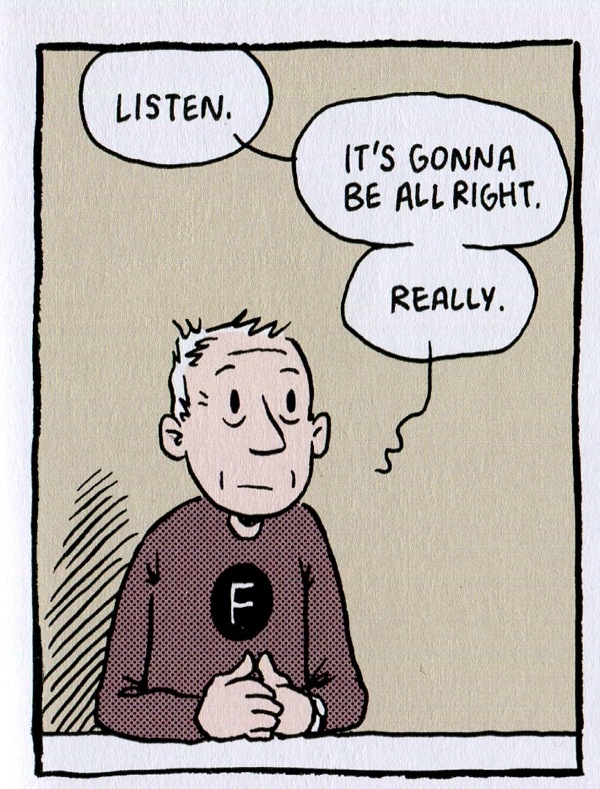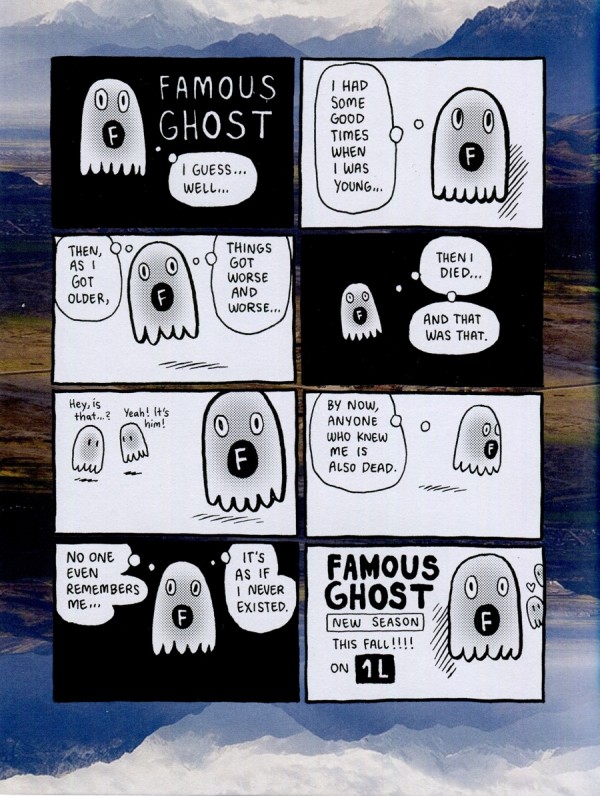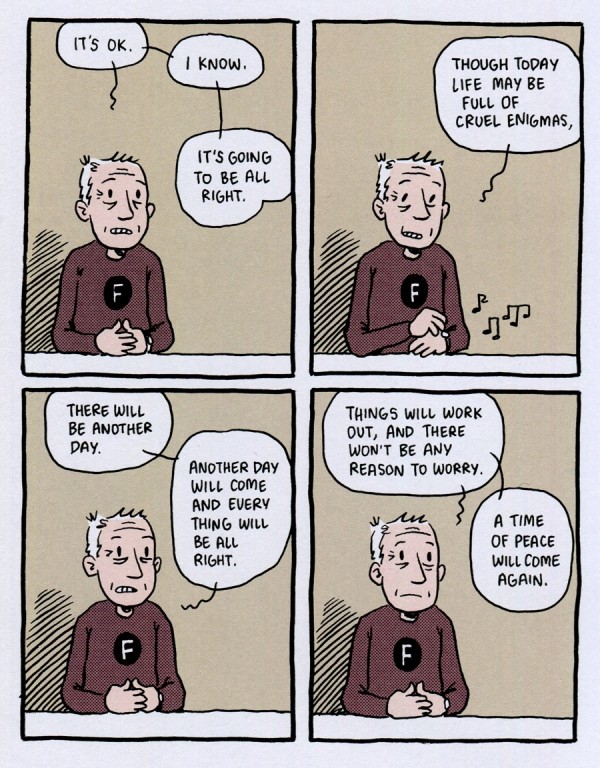What We’re Reading: The Wild Kingdom

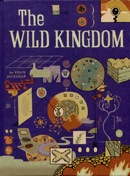 The Wild Kingdom by Kevin Huizenga (Drawn & Quarterly, 2010)
The Wild Kingdom by Kevin Huizenga (Drawn & Quarterly, 2010)
Kevin Huizenga’s The Wild Kingdom is a challenging book, and the challenges begin right up front in the introduction. Huizenga lists a Borges-like history of the material represented in the book, a barely described Wild Kingdom that he’s seeking to record: “All, therefore, that I proposed to do in forming the original collection during the fall of 1999 and early 2000 (self-published as Supermonster #12) was to select a few exemplary scenes closely connected with each other, and in which certain general laws appeared to reign independently of the individual peculiarities of each.”
This is, of course, what most storytelling is all about: taking a few exemplary scenes that are connected and constructing an order for them that relates some sort of meaning or theme.
Huizenga continues: “…I am fully aware that the collection is very far from being complete; there are many gaps which readers, however, may readily fill in for themselves. My chief aim, to place side by side types and sequences that might best serve as landmarks to the wayfarer on his or her onward path, has, I trust, been fulfilled.”
Here’s the other half of storytelling: the audience. In comics, these “gaps” in a story are quite literal—they’re the gutters in between every panel, which overtly demand that readers fill in the blanks.
So what are these particular scenes that Huizenga selects as exemplary? The first half of the book is nearly silent, focusing on Glenn Ganges, a nondescript man going through a somewhat nondescript day. It’s a common theme in comics: a white dude confronts the banality of day-to-day life. What separates Huizenga’s depiction of the content are the occasional shifts to focusing on the animals that exist on the periphery of Glenn’s life: a squirrel chases an apple, a pigeon eats fries and gets hit by a car, a hawk eats the pigeon. It’s unclear as to whether Glenn is aware of most of this, which lends a certain feeling of nature roiling just outside our everyday life, but it’s still not too far from, say, the workaday ramblings of Harvey Pekar.
But the story shifts suddenly, from black and white to color, from quiet to wordy, from a supposed real life to what might be a TV show:
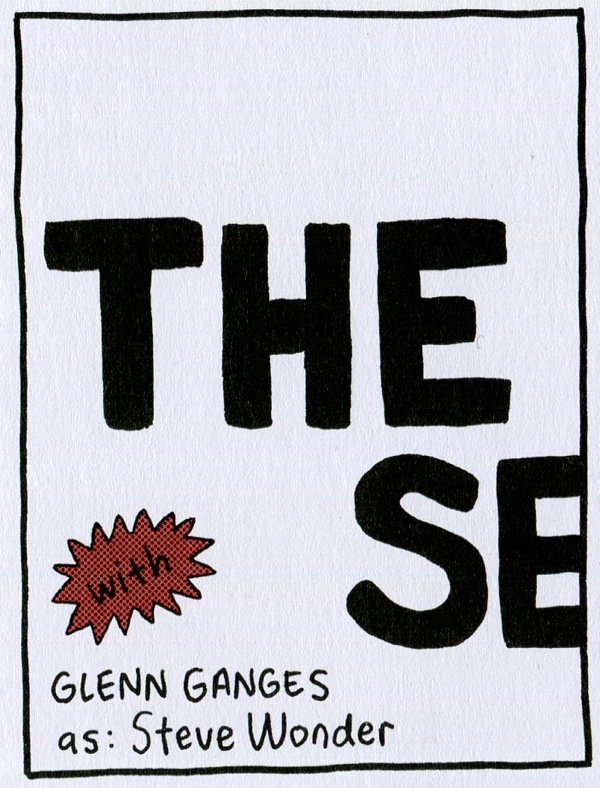
The scene changes come quickly after this. Some are loosely connected by repeated dialogue or similar-looking characters, but any singular narrative thread is hard to find. Product placements and testimonials abound. Is this comic-book-as-channel-surfing?
The gaps that Huizenga spoke of in the introduction are becoming bigger and harder to fill in. The Famous Ghost appears out of nowhere and disappears just as quickly, followed by more ads and testimonials. Then, with no introduction, come three pages of this man:
Is this the Famous Ghost, prehumous? The only link is the circled “F,” but comparing the man’s speech to the ghost’s, one an exhausted, forced optimism, the other a dawning, lost existentialism, is a bit heartbreaking.
Or maybe that’s just how I fill in the gaps.
The cuts continue to come quickly, charts and commercials juxtaposed with flashbacks to dead animals juxtaposed with text from Maurice Maeterlinck’s Life of the Bee. Are we meant to accept our consumerism as part of the Wild Kingdom? Or are the dying, the dead, and the ghosts supposed to serve as some sort of memento mori to draw our attention away from the people on TV?
The onslaught of images ends with a page of illegible charts that segues into a 15-page silent procession of causation that starts with the death of an eagle and ends with the destruction of the world. It’s an apocalyptic Rube Goldberg machine, with the charts perhaps representing the unknowable forces of the universe, the bad luck that hits us in the middle of the night and reminds us that, despite our science and our civilization, there will always be things we can’t control.
Huizenga, in the introduction, also mentions that “the more technical ideas introduced early on are also defined in a glossary at the end.” There is no glossary past his portrayal of the end of the world, so I have to assume that his silent ballet of destruction is the undisguised explanation of all those hints of danger and wild nature that seeded the first half of The Wild Kingdom.
And that’s where the book leaves off. The end. The ultimate end. Presented with such a blatant lack of control over our fates, how do we look at our lives?
